
|
 |

|
 |
|
The dynamic new gen Bharatanatyam teachers of Chennai - Part I - Lalitha Venkat e-mail: lalvenkat@yahoo.com Photos courtesy the artistes November 8, 2017 (This article was commissioned for the 2016-2017 issue of Attendance - edited by Ashish Mohan Khokar - that had focus on Guru-Shishya Parampara. Reproduced here with permission.) Chennai has been the hub of Bharatanatyam training, since the times of the great masters who migrated to the city for brief or extended periods of time, to pass on their knowledge to the new class of aspiring dancers, who in turn turned teachers to meet the ever growing demand for learning the art. It would be no exaggeration to say that almost every other street in Chennai has Bharatanatyam dancers and teachers. Kalakshetra veterans like the Dhananjayans, Chandrasekhars, C.K. Balagopalan, Savitri Jagannath Rao, A. Janardhanan, Vasanthalakshmi, Ambika Buch, Leela Samson are evergreen gurus as are Rhadha, Chitra Visweswaran, Sudharani Raghupathy and Dr. Padma Subrahmanyam. Alarmel Valli and Priyadarsini Govind have few disciples in the public eye while Malavika Sarukkai has turned mentor to a couple of bright talents. Kalakshetra Foundation, Madras University, MGR-Janaki College, Kumararani Meena Muthiah College of Arts all based in Chennai, Annamalai University (Chidambaram), Kalai Kaviri College of Fine Arts (Trichy), Sastra University (Thanjavur) are reputed institutions for courses in Bharatanatyam. ABHAI conducts yearly camps. Bragha Bessell and Indira Kadambi are sought after for their abhinaya skills. A. Lakshmanaswamy's Nrityalakshana is like a "finishing school" for dancers from far and wide. Meenakshi Chittaranjan, Urmila Sathyanarayanan, Binesh Mahadevan, Jayanthi Subramaniam, Vijay Madhavan, Sheejith Krishna and many Kalakshetra alumni are busy teachers. The current rage is of course to learn 'items' from various dancers. The budding students of Sheela Unnikrishnan dazzle with their superb coordination and almost perfect synchronization on stage. Anitha Guha's dance dramas are famous for the skilled dancers many of whom are also good soloists. So many established dancers in Chennai are quietly doing their bit to impart the aesthetics of dance to the current generation as well as the employed who attend late evening dance classes to unwind from their work stress. Some of these dynamic teachers share their experiences about their own training, what they imbibed from their gurus and how they are passing on their knowledge to the present generation while also adapting to the current scenario. BRAGHA BESSELL 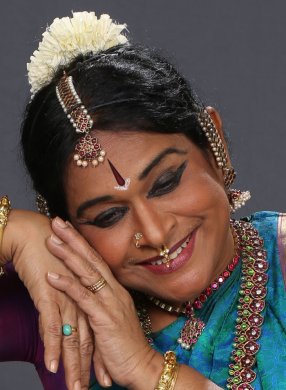 I am very blessed to have great legends as my gurus - Mangudi Dorairaja Iyer, Kunchitapadam Pillai, Adyar K. Lakshman and Kalanidhi Narayanan. They were supreme teachers with endless knowledge of their subject. They were creative, inspiring, hardworking, giving, loving and found great pleasures in their teaching. From a very young age I took up dancing very seriously. My mother was the main driving force and a great support. Between my parents and gurus, my thirst for this art has continued to grow. The Guru Shishya Parampara method retains the close control of the guru over the training of the students. The advantages are that the theory and practical learning retains the authenticity and purity of the items taught. The opportunity to correct and to advance the student is very immediate with this traditional system. The disadvantages are that the progress may seem to be slower when compared to the increasing speed of modern life style. Nowadays, the multimedia gives endless supply of ideas and training routes. The students tend to dip into a variety of styles that in turn often confuses the performers and the audience. Especially when developing advanced student in abhinaya, it is the depth of emotion and understanding made by each individual. So Guru Shishya Parampara is a proven method in achieving progress. In my teaching, I try to explain the lyrics, meaning and the situation thoroughly and guide my students to express through their own individuality. UMA ANAND  Hailing from a rich traditional background, from my childhood I developed a passion for music and dance. My father K.N. Dandayudapani Pillai started Natyakalalayam in 1959. Actor Srividya and I were the first few students enrolled in the school, where the Gurukula method of teaching, the system in practice those days, was employed. There were students living in our house and learning dance. I started learning music even before I went to school. My father made sure I had good education; music and dance were taught only in my free time. He was a strict disciplinarian, who gave importance to character and behaviour. He insisted that children should get the blessings of their parents before coming to dance class. In the Gurukula system, the students were dedicated and devoted to their teachers. There was intense rapport between them. Because of great respect, even if the students had a doubt, they would hesitate to ask for fear of being scolded, so they would wait for an opportunity when the teacher was in a good mood. Now, the student-teacher relationship has changed. The students are more friendly and casual. The teachers cannot scold them and have to explain convincingly and be more patient. I have students of all ages from 5 to 50, including working people and housewives. Those days we had group classes. Nowadays we have to be more specific of their basic skills. Indian students have a cultural background and can understand things easily. For non Indians we have to explain many things repeatedly and respond to their many queries. I teach in Canada for 3 months every year where most of my students are non Indians. In this competitive world, education is very important. With heavy school work load, children can hardly spend three to four hours a week for dance classes. Despite their dedication and diligent practice, they do not get opportunities to exhibit their talents. Only the wealthy and influential get opportunities to perform. A teaching career is more rewarding than a performing one. Over the years, the teaching methodologies have changed. The student-teacher relationship has changed. The art itself has taken a new dimension. ANIRUDDHA KNIGHT 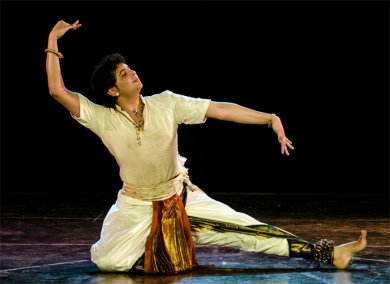 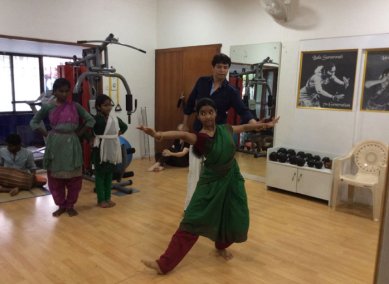 It is essential for any parampara to grow and evolve with the times, but to also ensure that the essential orthodoxy of its teachings and "ways" (margam) remain intact with a pristine clarity of understanding both by the guru and the shishya. Much of the learning is done through repetition, sometimes pedantically, with movements repeated over and over hundreds, if not thousands of times over the course of many months or years. It is this process, through the grueling test of making the dance second nature to the body, mind, and soul that the shishyas will be able to answer, "Why do I dance?" Particularly in today's field of learning, children are encouraged to ask questions. Through diligence and earnest learning and teaching, many techniques and approaches to the dance and music are revealed; what is not needs to be answered with time. When I was taught by my mother and guru Lakshmi Knight, there were many times that what was taught could not be projected through my art due to my lack of maturity at the time. What I have understood, within the third decade of my life, is that many things are not "learned" but absorbed through constant observation. What I was "taught" twenty years ago but could not execute then, suddenly materializes and is accomplished innately today. That is why learning is always an ongoing process. Nearly all of my students come from backgrounds without any exposure to the classic arts. Their lives have not given them this privilege as many of us claim with entitlement. It has become the crux of our philosophy at the Balasaraswati Institute of Performing Arts here in Chennai to remove this entitlement that we as a society encourage. This gluttony of self-aggrandizement and importance in the arts has led to the urgent task at hand for all of us - gurus, shishyas and rasikas - to ensure that the traditional ways of teaching and learning are re-established for present and future generations. NRITHYA PILLAI 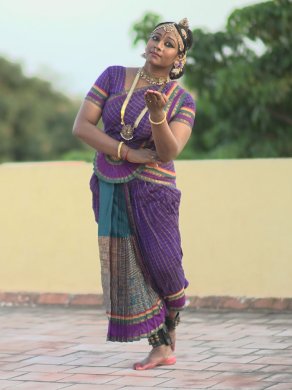 I learnt predominantly through being born into an illustrious Nattuvanar parampara. My learning started very young by being around my maternal grandfather Swamimalai Rajarathnam Pillai. I don't as such call myself a disciple of a "guru," but just attribute my art to being part of the family. I live in the suburbs, and my students predominantly are from this part of Chennai, from a middle class background with a genuine love for the art. Some are from economically underprivileged backgrounds also. We have arangetrams and concerts that focus on the art and not on embellishments. I have over 50 students and most of them are here out of complete interest and love for their art and teacher. One thing I have heard and seen with classes at home, both with my grandfather and then mother Jayakamala Pandiyan, is that there is never any force or even a strict attitude. There is seriousness and commitment but an ease in taking the student through the path. I follow this in totality. We ultimately are happy people inside my dance class. Discussing technicalities or breaking down concepts was never a part of the Nattuvanar tradition according to me. So teaching happens the old school way. Students dance from the adavus and gradually proceed to the traditional margam. Guru Shishya Parampara works like the concept of family for me. I come from a family that is steeped in dance. And when students learn from me, they then become part of the family too. That is what the parampara promotes, one big family where all of us are related through art. ANITHA GUHA 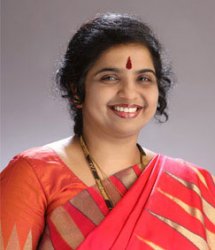 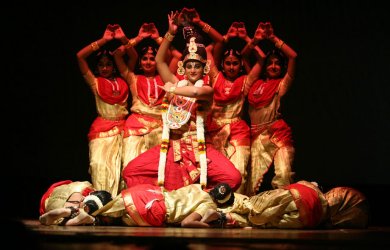 I was initiated into Bharatanatyam by my mother Karthiayini Natesan from whom I inherited the dramatic quotient of natyam. My next guru Radhakrishnan of Vazhuvoor bani taught at my school and I had only respect and fear towards him. Guru Govindarajan Pillai of Pandanallur bani was a real task master. He enabled me to present a margam for three hours when I was just 12. He recognized my flair for choreography and encouraged me to create small pieces. For a short while, I learnt from Ananda Shankar Jayant of Kalakshetra. God has been very kind to me bestowing me with many wonderful, talented and dedicated students. I come across all types of students; those who wish to learn just as a hobby or as a form of physical exercise. Most are drawn to natyam after watching Bharathanjali productions and wishing to be a small part of it, those who just want to go up to the arangetram level, those committed to the art, learning for more than two decades to become professional dancers both in solo and nrithya natakams. Many have blossomed into solo performers and teachers and have made a mark for themselves. With the long years of bonding with my students, they look up to me more as a friend, mother and mentor. My approach to teaching is a friendly methodology. I believe any student who likes the class, likes the teacher, and will automatically love the subject, so teaching becomes easy. I never compare one student with the other, as each one has her own strength and weakness. My duty is to focus on each one's strength, individuality and work on their weakness, to bring out the best in each of them. In the ancient system, the shishya learnt every aspect of the art and life in gurukulavasam. He became the torch bearer of the guru's legacy. With the current exposure and easy access to knowledge, there are many situations where the knowledge exchange between the guru and shishya has become a two way process. In older times, the knowledge and styles were highly compartmentalized; students were not allowed to learn or appreciate other styles. Now, there is broadening of outlook, and anything good is taught to be appreciated. Having evolved over the years, the Guru Shishya relationship remains unique and eternal. SHEELA UNNIKRISHNAN 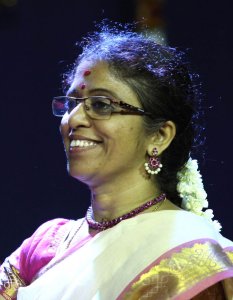 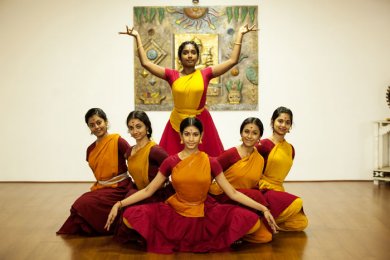 My parents initiated me into Bharatanatyam in 1981. With my two younger sisters, I was made to learn Carnatic music and Bharatanatyam from teachers who came home and taught us. Guru M. Sundaram, known as "Railway Sundaram" who was running Sridevi Natya Kala Mandali in Perambur, came to Villivakkam to teach us the Melattur style. His violinist Dakshinamoorthy taught us Carnatic music and I also learnt harmonium from him for a few years. All our orchestra rehearsals were conducted at my guru's residence-cum-institute after 4pm. It was our second home. He was an untiring teacher and within a short span of time also completed the arangetram for us, in which we presented a few variety dances taught by him. In 1990, I started training in Kuchipudi from Guru Vempati Chinna Satyam at Kuchipudi Art Academy. He had hostel facility and taught everyone free of cost. This really inspired me and made me understand the true purpose of art. I joined as dance teacher in Padma Seshadri School in 1992 and my experiences there are extremely valuable. I learnt nuances of group choreography as well as got the opportunity to handle students of varied age groups. Consistent and continued efforts, along with utmost sincerity and devotion to the art form are essential for an artiste to grow, an important lesson that I learnt from both my gurus. Consciously or unconsciously, I have tried to observe and internalize my masters' approach to teaching and training students. Whatever I have imbibed from them, I strive to give my students through this beautiful path of Guru Shishya Parampara. These 30 years of teaching have given me the most enriching of experiences and kindled my student spirit like none other. Like how my gurus taught me, I too try to instill qualities such as discipline, determination and perseverance in my students, also making dancing blissful and fulfilling in Sridevi Nrithyalaya. A. LAKSHMANASWAMY 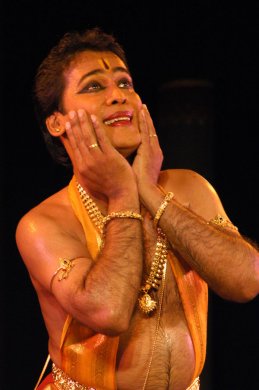 I had my initial training in Malaysia under Meera Venugopal and later under Guru K.J. Sarasa. Sarasa was a traditionalist at heart and was generous but very exacting as a teacher. Due to her extensive musical background, her inventive adavu sequences were thoughtfully combined with musical patterns to create beautiful choreography, which I continue to teach today. I also had the opportunity of training with other legendary gurus like abhinaya doyen Kalanidhi Narayanan; Prof. Sudharani Raghupathy whose basic tenets of the technique of Bharatanatyam I still impart to my students and Prof C.V. Chandrasekhar, who taught me the subtle nuances required as a performer of Bharatanatyam. It is this cumulative legacy that I have imbibed in my long association with these gurus that I bring to my teaching today at Nrityalakshana. I teach a limited number of students (around 50). I don't believe in having large numbers because from the time they start the tattu-adavu, I supervise their classes with a hawk's eye. I have students as young as seven, as well as professionals who have been performing for many years and a septuagenarian too! My classes are open-ended and are not rigidly formatted according to time. A one-hour class rarely happens at Nrityalakshana. I adapt my teaching to the student. I understand the student thoroughly and mould him/her based on his/her comfort with dance and the end result is the student develops a keener interest in dance and enjoys himself/herself in class as it's a personalized experience. When it comes to teaching technique, I am a hard task master, much like my guru. However, just as Sarasa teacher was with her students, my classes too are filled with repartee, banter, and anecdotes from real life. We share meals, we travel together and my students come to me with their personal grievances as well. I believe that when I know and understand my students, I can unlock their individual potential as dancers. Then, I can mould and guide them based on their comfort and ability, all while keeping with tradition. This often results in a deeper appreciation of the art form and allows dance to have a greater impact in the dancer's life, long term. Dance comprises my entire life. My students are an integral part of my life. They are my family. NARTHAKI NATARAJ 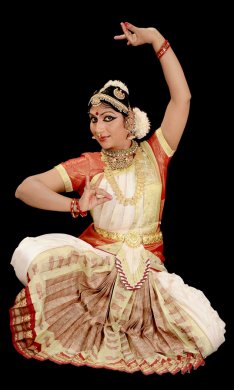 For me, Gurukulam means, "to be one with the living god, our Guru." This is a sacred relationship. My friend Shakti and I were like daughters to Guru Kittappa Pillai. All his relatives reciprocated with the same affection. This gave me a sense of security and a family atmosphere. All our concentration was only on learning dance. The year Kittappa Pillai died, 1990, till 2001, we were clueless about our future and came to Chennai - that has given life and permanency. It was the Tanjore Quartet, the forefathers of my guru who had codified and shaped Bharatanatyam. Hence, even when there are so many banis today, the Thanjavur bani propagated by the Quartet is the original and root of all banis. And I would always love to stick to that originality. I visualize a choreography from my guru's point of view and try to do the same. Today, Shakti and I run Velliambalam Trust Nadana Kalaikoodam at Chennai. We have students from many parts of India and abroad. My students come from various sections of society; some are lawyers, engineers, business professionals, medical student and chartered accountant. The one qualification I look for is passion for the art form. Abroad, I have many students from the Srilankan Tamil community. My guru never insisted on copycat performance. When he taught some jathi, swaram or sahityam he would modify to suit it to that particular person without disturbing the base. Similarly, I never sit and teach my children hand after hand but allow them to follow me rather than copy me. They learn mostly by watching my performance. This I think helps their memory power and also brings out their built-in abilities. During the old days when we had no mobile or other recording equipment, we wrote down whatever we had learnt every day. To this I would usually add small stick drawings of the adavus. Now even as technology has improved, I still insist my kids write down which would help them to remember for long. Just like my guru insisted, we focus on the quality and not the quantity of the students. He hardly encouraged group practice sessions. He preferred to keep it limited, mostly one to one while teaching. My training with my guru was mostly like that and I continue to follow his footsteps. ROJA KANNAN 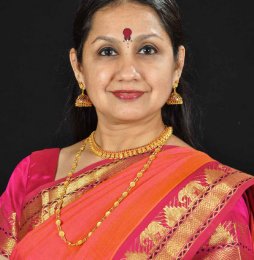 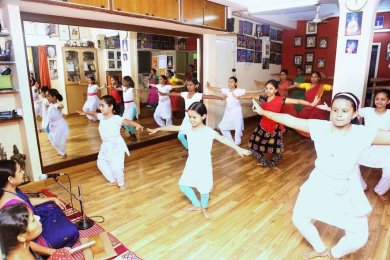 Bharatanatyam as an art form has grown in stature and has attained the pride of place as one of the most widely learnt and practiced art forms in the world today. The major contributor for this are the young teachers who have mushroomed all over the world and in their own small way creating a positive awareness about the art, educating and moulding young minds and bodies into this rigorous but beautiful discipline. My gurus Adyar K. Lakshman and Kalanidhi Narayanan were like my two eyes. Most deserving of the title 'Guru', they removed the multiple layers of ignorance in which I was shrouded as a young student and led me on the path of enlightened knowledge, igniting that fire in me which is still burning brightly and engulfing the minds of hundreds of my disciples. Chennai occupies the top spot as one of the major learning centers of Bharatanatyam with hundreds of teachers of all ages and standards contributing in their own way to the spread of the art. As a teacher myself, I consider every young student who walks into my dance class as a dancer in the future, so I start my teaching with an open mind without any preconceived ideas. So the whole process becomes an enjoyable and interactive experience. I have had students of all kinds - those who came out of their own interest, those who were forced to learn because the parents (especially mothers) wanted them to and those who came because of peer pressure. But the teaching methodology I use has been the same for everyone with no favors granted on any grounds. I take pride in the growth of my students, many of whom have already started their own dance classes and continuing the parampara. So the Guru Shishya Parampara continues to thrive in a healthy atmosphere of interactive learning. I am truly blessed to have had the greatest of gurus and now the best of disciples. The dynamic new gen Bharatanatyam teachers of Chennai - Part II Lalitha Venkat is the content editor of narthaki.com Post your comments Please provide your name and email id when you use the Anonymous profile in the blog to post a comment. All appropriate comments posted with name & email id in the blog will also be featured in the site. |